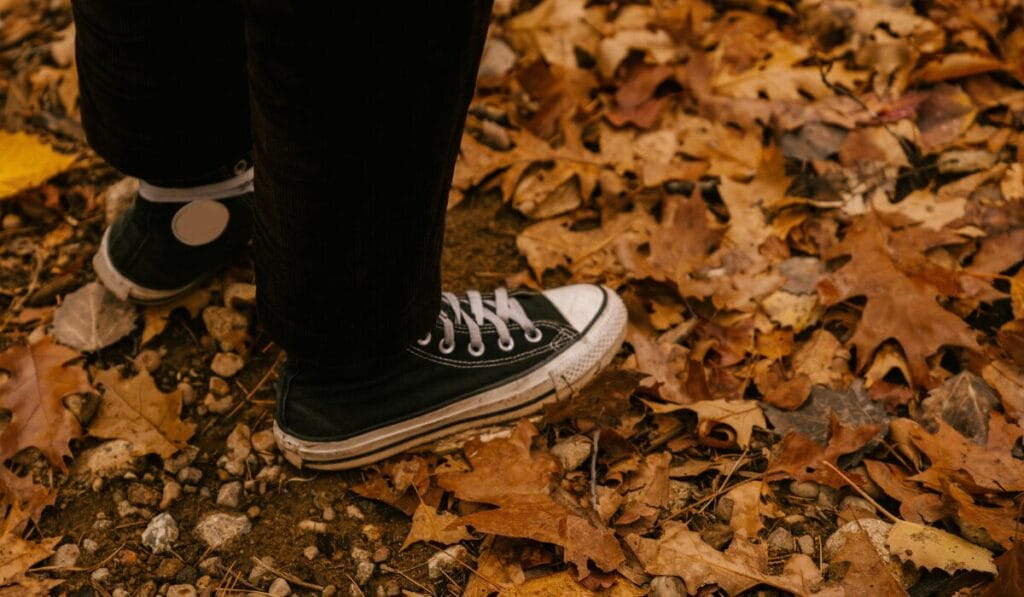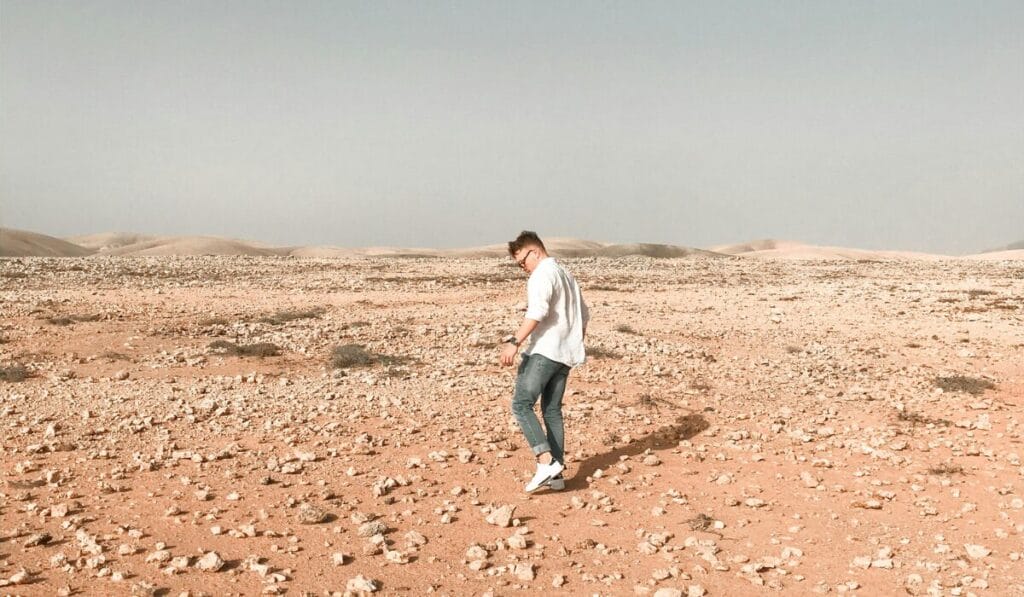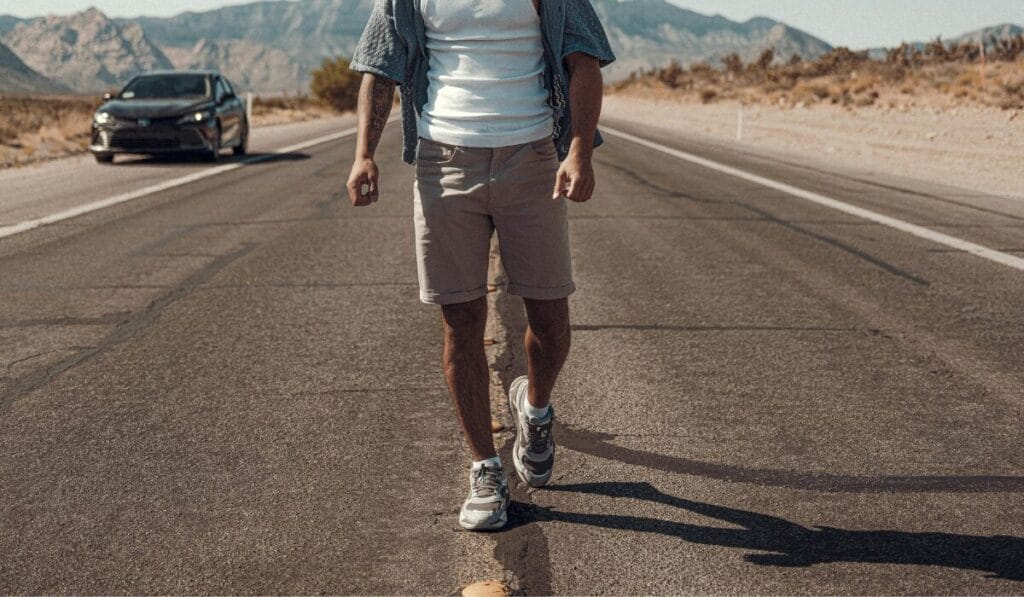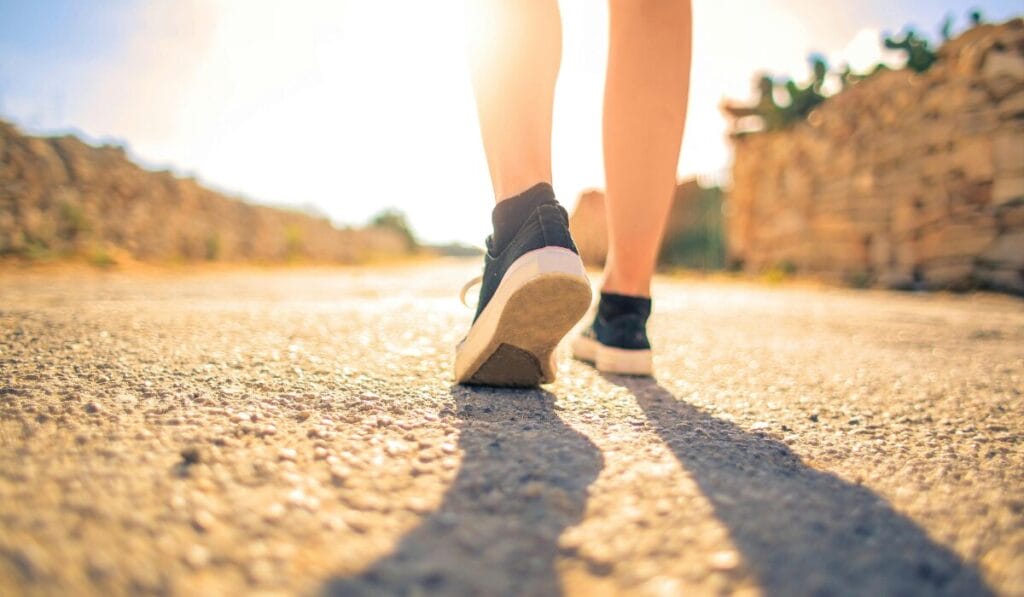Which Shoe is Better for Walking on Dry Track?
The best shoes for walking on dry tracks are those with good cushioning, flexible soles, and breathable materials, as firm surfaces require comfort, stability, and smooth movement that is not possible without these features. In this blog, you know that dry tracks are ideal for walking, but choosing the correct shoes is important. Now, which shoes should be used for walking on this? Your feet can give a better answer to this. Throughout this blog, we’ll take you on a journey through choosing fun and effective shoes.

Which Shoe is Better for Walking on Dry Track? and running
Fitness enthusiasts, hikers, and nature lovers know that anything can happen in rough terrain, so they still venture into those challenging areas. A dry track, whether it’s a paved road, a park trail, or a sports track, provides a stable and clean running environment. However, not all shoes are created equal when it comes to comfort and performance in these conditions. Again, choosing the right footwear can turn walking into a smooth and enjoyable experience.
So finally, which shoe is best for running on a dry track? So it depends on factors like the walking style of the person, foot structure, and some personal preferences, etc. This comprehensive blog will give tips on what to look for in walking shoes, the best types of shoes for dry trails, and how to maintain them for optimal performance.

Characteristics Of These Shoes
Here are a few features to keep in mind when choosing shoes for running on dry tracks:
1. Branded strong sole
The durable rubber outsole can provide good traction, even on dry ground and tracks.
2. Breathable material
Running on a dry track usually generates heat. So breathable materials like mesh or engineered knits keep feet cool and dry.
3. From heel to toe
A moderate heel-to-toe drop of approximately 4-8mm is great for walking, promoting a natural gait without stressing the knees.
4. Roomy toe box
The toes should have enough space to move without constriction. It gives comfort to the foot.
Top Shoes for Walking on Dry Tracks
Here are some shoe names that are best for walking on dry tracks.
- 1. Running Shoes
- 2. Walking-Specific Shoes
- 3. Minimalist Shoes
- 4. Trail Shoes
- 5. Casual Sneakers
Why dry track walking with the right shoes is important.
Walking on a dry track may seem straightforward to one, but the reality is that it places unique demands on the feet. Firm, often flat surfaces can put pressure on the joints, arches, and heels of the foot if the shoes do not have adequate support. Another thing is that repetitive motion without cushioning or flexibility can lead to discomfort and injury.

What Experts Say
According to the Cleveland Clinic
The Cleveland Clinic states that “when walking off-road, such as on trails, your ankles need support and your shoes need extra support.”
Source: Cleveland Clinic. Com
Little Conclusion: This statement from the Cleveland Clinic suggests that for walking on trails and dry tracks, shoes that support the ankles and are sturdy are needed.
According to Sanford Health
Dr. Burkley J. Jensen, DPM, a podiatrist at Sanford Health, writes on sanfordhealth.org: “The structure of our feet changes as we age, so we should use shoes that our feet can tolerate. Look for shoes that have more arch support. Then the doctor, Dr. Burkley J. Jensen, says that podiatrists also look at your feet and recommend a specific type of shoe that works best”.
Source: Sanford Health.org
Real Users Reviews
Review From Zappos
one user writes on Zappos. “I wore these shoes in single track and I was very excited about these shoes, I found them to be very comfortable, great and cushioned shoes,”
Source: Zappos.com
Another Review from Zappos
Another user also wrote in a review on Zappos, “The improved grippy sole gave me so much confidence while walking, I’ll take my Hokas any day.”
Source: Zappos.com
Conclusion
Determining which shoes are best for dry track running depends on walking style, foot anatomy, and personal preference. Whether choosing running shoes for their cushion, comfortable walking shoes, or minimalist options for a natural feel, choose soft comfort, fit, and durability. Correct shoes should also be used, and investments should also be made in them. Choosing the right footwear affects the entire experience of life, especially on terrains like uneven, rocky ground, and dry tracks. If you are still unfamiliar with the important and basic types of footwear, it is important to learn them first.
FAQs
Q1. Which shoe is better for walking on dry track in physics?
Shoes that have the best friction and stability are considered the best for running on dry tracks, in terms of physics. Rubber outsoles and textured grip are required to avoid slipping. The presence of adequate traction and the lightness of the shoes guarantee forward movement and smooth movement and are useful for reducing pressure on the joints.
Q2. What are the best shoes for walking on trails?
Trail walking and trail running shoes are perfect for walking on trails. These shoes have grip for walking on uneven terrain, water-repellent materials, durability and cushioning are the characteristics of trail shoes that keep the feet safe and comfortable while walking on trails.
Q3. Can running shoes be used for walking on dry tracks?
Yes, running shoes can be used for walking, but make sure that the heel cushion is not excessive, as it can affect the gait.
Q4. Are minimum shoes suitable for walking on a dry track?
If one has strong foot muscles and enjoys a natural walking experience, minimalist shoes are the best choice.
Q5. What is the most important feature of dry track shoes?
The most important feature is to be soft and fit. A properly constructed lace-up shoe with good cushioning and flexibility will ensure a smooth and pleasant walking experience.
Q6. What type of cushion is best for us to ride on a dry track?
We found medium to firm cushioning to be the best option for dry track running. It has a high absorption capacity, thus allowing the shoe to absorb shock without excessive softness or bounce, and ensures a stable step.
Q7. What is the role of mesh upper shoes on dry tracks?
Mesh upper shoes perform quite well on dry tracks. This demonstration is particularly noticeable when walking for a long time or in hot weather; in both cases, it provides excellent breathability, keeping the feet cool and preventing sweat. However, it is still important to research durability and structure when purchasing shoes. If the outsole of your shoes is strong and the midsole can provide strong cushioning, then mesh upper shoes can be excellent in dry areas, offering comfort and being lightweight. But it is important to ensure that the shoes are not too thin because such thin shoes can fail on uneven rocks and dirt.
Q8. Are trail shoes suitable for walking on dry trails?
Trail shoes are not only suitable for walking on dry trails but are also a great option because trail shoes are made for rough terrain, rocky ground, and uneven paths. These shoes have a high level of stability and grip, which is why they have more traction than traditional walking shoes. One of the problems with dry trails is that there is a lot of slippage and the risk of injury is quite high, but trail shoes protect against this slippage and injury with the help of their hard soles and make your walk more stable and safe. However, if the dry track is smooth, then a shoe with good cushioning and flexibility is better.
Q9. Does running on dry tracks without socks have a negative effect on the shoes?
Using shoes without socks on dry tracks depends on the shoes, but both performance and comfort will be affected. Dryness and dust can damage the insoles. Sweat can cause blisters on the feet. Sweat can cause odor, and the internal grip of the shoes is lost.
Note
The most important thing is to ensure comfort, performance, and foot health, so the right shoe for running or walking on a dry track is essential. A dry track requires stability and cleanliness. The ideal shoe must also provide a combination of superior features, such as durable traction, breathability, and must-have cushioning to absorb impact and reduce stress on the foot joints. Whether a person prefers specific walking shoes for extra comfort or minimalist options for a natural feel, or the purpose fit and functionality of their cushioned running shoes.

